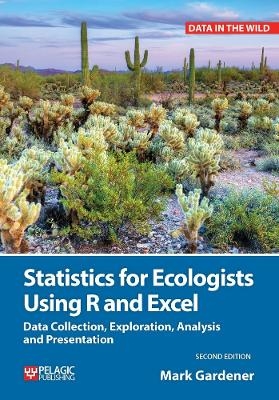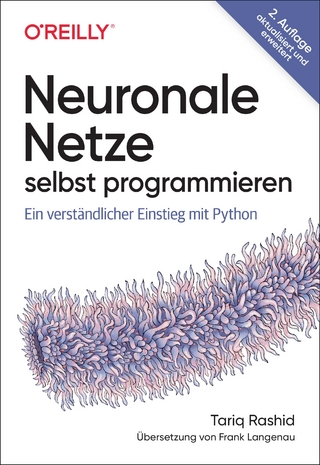
Statistics for Ecologists Using R and Excel
Pelagic Publishing (Verlag)
9781784271404 (ISBN)
This is a book about the scientific process and how you apply it to data in ecology. You will learn how to plan for data collection, how to assemble data, how to analyze data and finally how to present the results. The book uses Microsoft Excel and the powerful Open Source R program to carry out data handling as well as producing graphs.
Statistical approaches covered include: data exploration; tests for difference – t-test and U-test; correlation – Spearman’s rank test and Pearson product-moment; association including Chi-squared tests and goodness of fit; multivariate testing using analysis of variance (ANOVA) and Kruskal–Wallis test; and multiple regression.
Key skills taught in this book include: how to plan ecological projects; how to record and assemble your data; how to use R and Excel for data analysis and graphs; how to carry out a wide range of statistical analyses including analysis of variance and regression; how to create professional looking graphs; and how to present your results.
New in this edition: a completely revised chapter on graphics including graph types and their uses, Excel Chart Tools, R graphics commands and producing different chart types in Excel and in R; an expanded range of support material online, including; example data, exercises and additional notes & explanations; a new chapter on basic community statistics, biodiversity and similarity; chapter summaries and end-of-chapter exercises.
Praise for the first edition:
This book is a superb way in for all those looking at how to design investigations and collect data to support their findings. – Sue Townsend, Biodiversity Learning Manager, Field Studies Council
[M]akes it easy for the reader to synthesise R and Excel and there is extra help and sample data available on the free companion webpage if needed. I recommended this text to the university library as well as to colleagues at my student workshops on R. Although I initially bought this book when I wanted to discover R I actually also learned new techniques for data manipulation and management in Excel – Mark Edwards, EcoBlogging
A must for anyone getting to grips with data analysis using R and excel. – Amazon 5-star review
It has been very easy to follow and will be perfect for anyone. – Amazon 5-star review
A solid introduction to working with Excel and R. The writing is clear and informative, the book provides plenty of examples and figures so that each string of code in R or step in Excel is understood by the reader. – Goodreads, 4-star review
Mark Gardener began his career as an optician but returned to science and trained as an ecologist. His research is in the area of pollination ecology. He has worked extensively in the UK as well as Australia and the United States. Currently he works as an associate lecturer for the Open University and also runs courses in data analysis for ecology and environmental science.
Preface xi
1. Planning
2. Data recording
3. Beginning data exploration – using software tools
4. Exploring data – looking at numbers
5. Exploring data – which test is right?
6. Exploring data – using graphs
7. Tests for differences
8. Tests for linking data – correlations
9. Tests for linking data – associations
10. Differences between more than two samples
11. Tests for linking several factors
12. Community ecology
13. Reporting results
14. Summary
Glossary
Appendices
Index
| Erscheinungsdatum | 12.01.2017 |
|---|---|
| Reihe/Serie | Data in the Wild |
| Zusatzinfo | 107 Tables, black and white; 196 Figures |
| Verlagsort | Exeter |
| Sprache | englisch |
| Maße | 170 x 244 mm |
| Gewicht | 1005 g |
| Themenwelt | Informatik ► Datenbanken ► Data Warehouse / Data Mining |
| Informatik ► Office Programme ► Excel | |
| Mathematik / Informatik ► Mathematik ► Statistik | |
| Naturwissenschaften ► Biologie ► Ökologie / Naturschutz | |
| ISBN-13 | 9781784271404 / 9781784271404 |
| Zustand | Neuware |
| Informationen gemäß Produktsicherheitsverordnung (GPSR) | |
| Haben Sie eine Frage zum Produkt? |
aus dem Bereich


